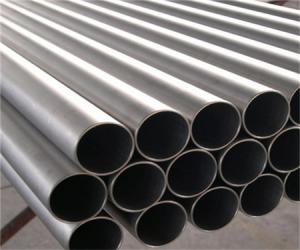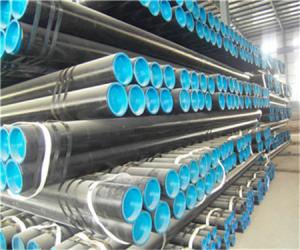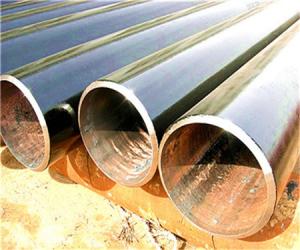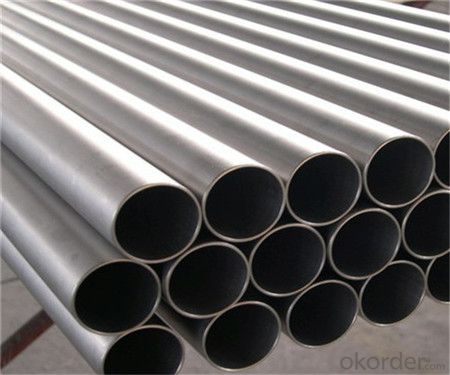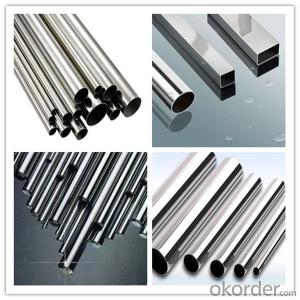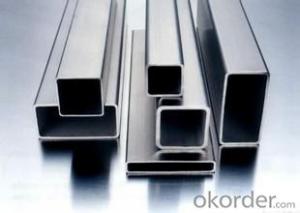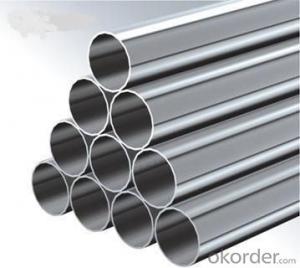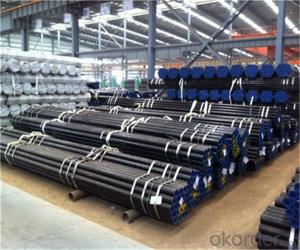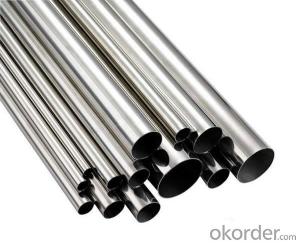Welded 304 Stainless Steel Pipes Manufacturer
- Loading Port:
- China Main Port
- Payment Terms:
- TT or LC
- Min Order Qty:
- 30 kg
- Supply Capability:
- 12000 kg/month
OKorder Service Pledge
OKorder Financial Service
You Might Also Like
Specifications
1、Structure of Seamless Pipe ASTM A106/53 Description:
Seamless pipe is formed by drawing a solid billet over a piercing rod to create the hollow shell. As the manufacturing process does not include any welding, seamless pipes are perceived to be stronger and more reliable. Historically seamless pipe was regarded as withstanding pressure better than other types, and was often more easily available than welded pipe.
2、Main Features of the Seamless Pipe ASTM A106/53:
• High manufacturing accuracy
• High strength
• Small inertia resistance
• Strong heat dissipation ability
• Good visual effect
• Reasonable price
3、Seamless Pipe ASTM A106/53 Specification:
Standard | GB, DIN, ASTM ASTM A106-2006, ASTM A53-2007 |
Grade | 10#-45#, 16Mn 10#, 20#, 45#, 16Mn |
Thickness | 8 - 33 mm |
Section Shape | Round |
Outer Diameter | 133 - 219 mm |
Place of Origin | Shandong, China (Mainland) |
Secondary Or Not | Non-secondary |
Application | Hydraulic Pipe |
Technique | Cold Drawn |
Certification | API |
Surface Treatment | factory state or painted black |
Special Pipe | API Pipe |
Alloy Or Not | Non-alloy |
Length | 5-12M |
Outer Diameter | 21.3-610mm |
Grade | 20#, 45#, Q345, API J55, API K55, API L80, API N80, API P110, A53B |
Standard | ASME, ASTM |
1) Material:20#(ASTM A 106/A53 GRB.API5LGRB,GB),45#,16Mn,10#.
2) Specification range:OD:21.3-610mm,WT:6-70mm,length:6-12m or according to the requirement of clients.
3) Excutive standards:GB,ASME API5L.ASTM A 106/A53,Despite of the above standards,we can also supply seamless steel pipe with standard of DIN,JIS,and so on,and also develop new products according to the requirements of our clients!
4) Surface:black lacquered,varnish coating or galvanized.
5) Ends:Beveled or square cut,plastic capped,painted.
6) Packing:bundles wrapped with strong steel strip,seaworthy packing.
4、Packaging & Delivery
Packaging Details: | seaworthy package,bundles wrapped with strong steel strip |
Delivery Detail: | 15-30days after received 30%TT |
5、FAQ of Seamless Pipe ASTM A106/53:
①How is the quality of your products?
Our products are manufactured strictly according to national and internaional standard, and we take a test
on every pipe before delivered out. If you want see our quality certifications and all kinds of testing report, please just ask us for it.
Guaranteed: If products’ quality don’t accord to discription as we give or the promise before you place order, we promise 100% refund.
②How about price?
Yes, we are factory and be able to give you lowest price below market one, and we have a policy that “ for saving time and absolutely honest business attitude, we quote as lowest as possible for any customer, and discount can be given according to quantity”,if you like bargain and factory price is not low enough as you think, just don’t waste your time.Please trust the quotation we would give you, it is professional one.
③Why should you chose us?
Chose happens because of quality, then price, We can give you both.Additionally, we can also offer professional products inquiry, products knowledge train(for agents), smooth goods delivery, exellent customer solution proposals.Our service formula: good quality+good price+good service=customer’s trust
SGS test is available, customer inspection before shipping is welcome, third party inspection is no problem.
6、Seamless Pipe ASTM A106/53 Images:

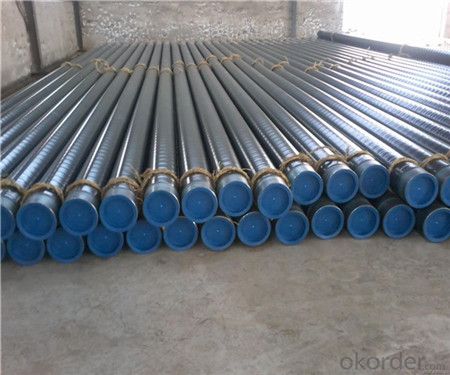
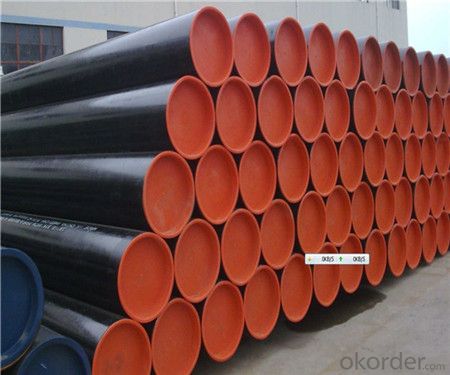
- Q: How do you remove scratches from stainless steel pipes?
- To remove scratches from stainless steel pipes, you can start by using a non-abrasive cleaner or a mixture of baking soda and water to gently scrub the scratched area. For deeper scratches, you can try using a fine-grit sandpaper or a stainless steel scratch removal kit. Remember to follow the grain of the stainless steel and apply light pressure to avoid further damage.
- Q: Can stainless steel pipes be insulated with Teflon?
- Indeed, Teflon can be utilized to insulate stainless steel pipes. Teflon, or polytetrafluoroethylene (PTFE) as it is also referred to, is a highly adaptable substance that is frequently employed due to its nonstick properties and its ability to withstand high temperatures and chemicals. It is an exceptional option for insulating stainless steel pipes since it provides thermal insulation, guards against corrosion, and prevents heat loss or gain. Furthermore, Teflon insulation minimizes condensation or moisture accumulation on the pipe's surface. Moreover, Teflon's low friction coefficient enables smooth fluid flow through the pipes, rendering it appropriate for a wide range of applications in industries like food processing, pharmaceuticals, and chemicals.
- Q: Where is the difference between seamless steel pipe and welded pipe?
- The steel tube is a hollow steel strip, used as pipe conveying fluid, such as oil, gas, water, gas, steam, in addition, the bending and torsional strength of the same, the weight is light, so it is widely used in the manufacture of machinery parts and engineering structures. It is also used to produce all kinds of conventional weapons, guns, shells and so on.
- Q: What is the difference between the stainless steel tube and tube rolling
- Stainless steel seamless pipe manufacturing process at home is divided into hot and cold drawing tube, two pieces of process what is the difference between the use of the same? Let's make a brief introduction.
- Q: Are stainless steel pipes suitable for water desalination plants?
- Yes, stainless steel pipes are suitable for water desalination plants. Stainless steel is highly resistant to corrosion, making it an ideal material choice for handling the high salinity levels in desalination plants. It offers excellent durability, longevity, and reliability in harsh environments, ensuring the efficient and safe transportation of water throughout the plant.
- Q: How do stainless steel pipes compare to titanium pipes?
- Stainless steel pipes are generally more cost-effective and readily available compared to titanium pipes. While both materials offer excellent corrosion resistance, titanium pipes have superior strength and durability. However, titanium pipes are significantly more expensive and may require specialized welding techniques. Ultimately, the choice between stainless steel and titanium pipes depends on the specific application and budget constraints.
- Q: What is sanitary stainless steel pipe?
- Passivation layer: after polishing, it is necessary to immerse the steel pipe in the passivation bath, and then use the acid passivation liquid to oxidize the surface of the steel pipe to form a passivation layer, so as to achieve the anti-corrosion effect of the steel pipe
- Q: Can stainless steel pipes be used for oil and gas refineries?
- Yes, stainless steel pipes can be used for oil and gas refineries. Stainless steel is a highly durable and corrosion-resistant material, making it suitable for the harsh and corrosive environments found in refineries. It can withstand high pressures, extreme temperatures, and exposure to various chemicals and corrosive substances commonly found in oil and gas operations. Additionally, stainless steel pipes offer excellent resistance to erosion, pitting, and cracking, ensuring the integrity and longevity of the pipeline system.
- Q: Why is the outer diameter of 1 inch galvanized pipe 33.7? And the outer diameter of one inch stainless steel pipe is 25.4
- The 1 inch galvanized pipe refers to the nominal size holes of 1 inches of water, the outer diameter is 33.7, its diameter fits a 1 inch pipe thread wire, and one inch stainless steel tube outer diameter is 25.4 that of the tube is in diameter standard specifications.
- Q: Are stainless steel pipes suitable for construction projects?
- Yes, stainless steel pipes are highly suitable for construction projects. They offer exceptional strength, durability, and corrosion resistance, making them an ideal choice for various applications in construction, including plumbing, HVAC systems, structural supports, and more. Stainless steel pipes also have excellent aesthetic appeal and can withstand harsh environmental conditions, making them a reliable and long-lasting option for construction projects.
Send your message to us
Welded 304 Stainless Steel Pipes Manufacturer
- Loading Port:
- China Main Port
- Payment Terms:
- TT or LC
- Min Order Qty:
- 30 kg
- Supply Capability:
- 12000 kg/month
OKorder Service Pledge
OKorder Financial Service
Similar products
Hot products
Hot Searches
Related keywords
